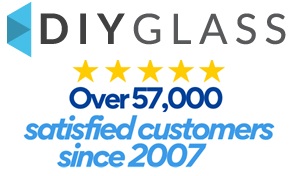Understanding the Difference Between Base Plate, Core Hole, and Face Mount Spigots for Glass Fencing
When it comes to installing glass fencing, the type of spigot you choose plays a crucial role in both the look and stability of the structure. Spigots are the fittings used to secure glass panels in place, and each type has unique advantages and installation requirements. The three main spigot options for glass fencing are base plate spigots, core hole spigots, and face mount spigots. This guide will explore the differences, benefits, and ideal uses for each, helping you choose the best option for your project.
1. Base Plate Spigots
Base plate spigots are a popular choice for glass fencing installations. These spigots are mounted directly on the surface of the decking, concrete, or tile using screws or bolts.
Key Features
- Mounting Style: Base plate spigots sit on top of the surface with a base flange that secures them in place.
- Installation: Secured with bolts, typically into a solid surface, making installation straightforward.
- Adjustability: Some base plate spigots allow for slight adjustments in alignment to ensure the glass panels are level.
Pros
- Easy Installation: Requires only surface mounting, making them easier to install than core hole options.
- Versatile: Suitable for various surfaces, including concrete, wood, and tile.
- Removable: Can be unscrewed and relocated if necessary.
Cons
- Slightly Visible: The base plate is visible on the surface, which may affect the aesthetic for some projects.
Ideal For
- Decks and Concrete Patios: Where surface mounting is possible.
- Quick Installations: Projects that require an efficient, straightforward installation process.
2. Core Hole Spigots
Core hole spigots are installed by drilling a hole into the surface and placing the spigot in the hole, creating a clean, low-profile look.
Key Features
- Mounting Style: Installed by drilling a hole and placing the spigot into it, which is then secured with an adhesive or grout.
- Aesthetics: Provides a sleek, minimalist appearance since the spigot is inset rather than sitting on top of the surface.
- Stability: Core hole spigots provide strong, stable support as they are anchored deeper into the surface.
Pros
- Minimal Visual Impact: Ideal for those who want an unobtrusive design.
- Durability: Securely embedded in the surface, offering strong support for the glass.
- Waterproof: Typically watertight, which is beneficial for poolside and outdoor installations.
Cons
- More Involved Installation: Requires drilling and precision to ensure a secure fit.
- Permanent Positioning: Removing or relocating core hole spigots can be challenging once installed.
Ideal For
- Minimalist Designs: Where a clean, barely-there look is desired.
- Pool Fencing: Provides a watertight installation that’s ideal for poolside environments.
3. Face Mount Spigots
Face mount spigots (also known as side mount spigots) attach to the side of the surface rather than the top, which allows for a unique look and can save surface space.
Key Features
- Mounting Style: Installed on the face or side of the mounting surface, allowing the glass to sit flush with the top of the surface.
- Space-Saving: Since they are mounted on the side, they free up space on the top surface, making them ideal for narrow or small spaces.
- Design Flexibility: Adds a modern touch, especially for areas where space efficiency and aesthetics are essential.
Pros
- Modern Look: Provides a floating, seamless look for glass fencing.
- Maximizes Surface Space: Keeps the top surface clear, ideal for narrow pathways or smaller spaces.
- Highly Secure: When mounted properly, face mount spigots provide strong support.
Cons
- Requires Structural Integrity: The mounting surface needs to be strong and stable enough to support side-mounted spigots.
- Complex Installation: Precision is needed to ensure stability, and mounting on the side can be more complex than top-mounted options.
Ideal For
- Small or Narrow Spaces: Such as narrow walkways or balconies.
- Modern, Floating Look: Where an elegant, floating glass effect is desired.
Summary: Which Spigot Is Right for Your Project?
Each spigot type offers distinct benefits, so the right choice depends on the specific needs of your project.
- Choose Base Plate Spigots if you want a straightforward installation that is versatile and easy to relocate.
- Choose Core Hole Spigots for a minimalist, secure, and waterproof option, ideal for pool fencing.
- Choose Face Mount Spigots to maximize surface space and achieve a modern, floating glass look in narrow or small spaces.
Conclusion
Selecting the correct spigot type for your glass fencing can make a big difference in both function and appearance. From the visible stability of base plate spigots to the seamless integration of core hole and face mount spigots, each option is suited for different design and installation needs. Understanding these differences can help you create a beautiful and secure glass fence that enhances the style and safety of your outdoor space.
